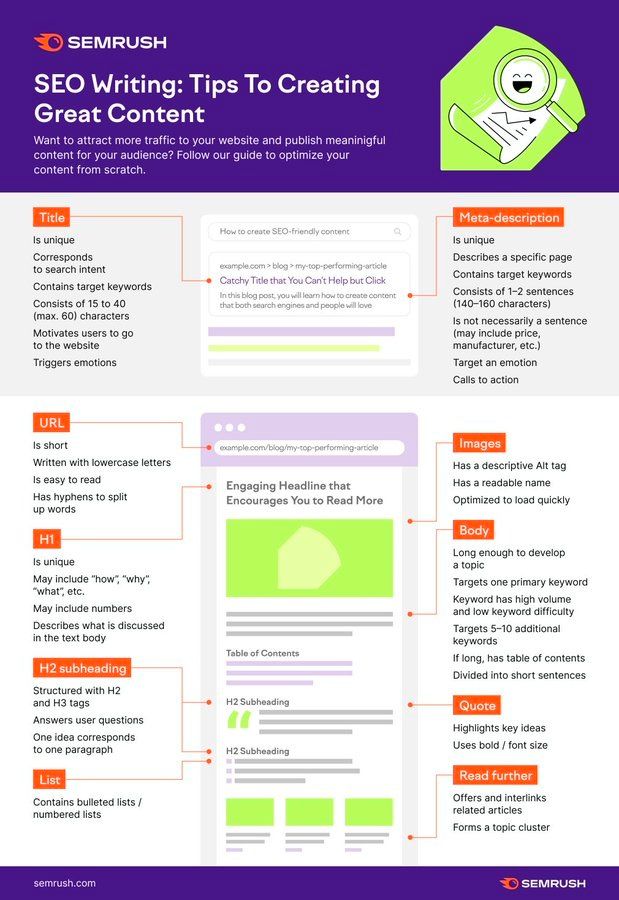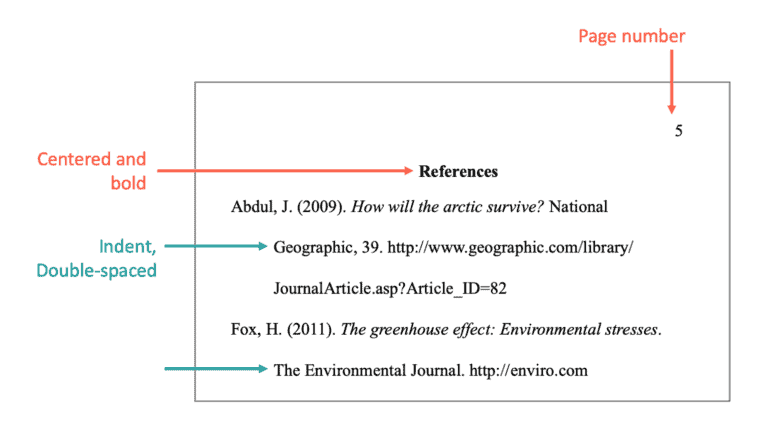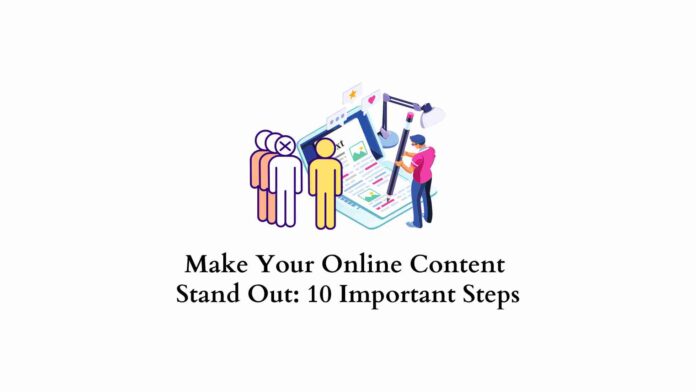Last updated - November 22, 2023
In the crowded digital landscape, standing out with your online content requires planning, creativity, and a keen grasp of certain crucial techniques. Whether you’re an aspiring blogger or an established brand, the challenge is to engage your audience amidst a flood of information.
Whatever the context may be, certain key approaches universally apply to make this mountainous task less daunting, but many of them include marketing your content to others.
This guide will delve into these critical steps, from understanding SEO all the way to crafting compelling calls-to-action, which are guaranteed to give your online content the edge it needs.
How to Make Your Content Stand Out From the Competition
Making your content stick out from your competitors is no easy task, but with a bit of planning and the following strategies, you’ll be on your way to creating articles that suit your audience!
Step 1: Understand the Basics of SEO
Before getting into the ways to make your writing more compelling, you first need to understand how to market your content. Without marketing, even the best content won’t be accessible to your users. To make your content stand out, you need to invest in search engine optimization.
SEO is a whole topic in itself, but in a nutshell, SEO is about establishing your authority with search engines. This is built up using keywords, authority links, and other factors.
To start your SEO strategy off right, make it user-focused. This is done by:
- Using keywords that are relevant to the content you’re producing
- Sticking to the theme or topic of a page in your content
- Writing content that’s deep and valuable to the reader
The following infographic should give you an idea of how to create SEO-backed content:


This advice will be really useful for the rest of the list. Remember that SEO is still an important part of maximizing discoverability, even as search engines become more and more competitive.
Step 2: Build a Content Toolkit
Automation has taken the content creation world by storm, and it’s in your best interest to take full advantage of them. Not only will content tools help make your content better, but they’ll also help you save time. You could use that time to create more content, so it’s a win-win for you!
Every content toolkit should have the following software:
- Content Research Tools (Google Trends): To track the popularity of search terms.
- AI Writing Tools (ChatGPT): To help come up with topics and outlines.
- Editing and Plagiarism Tools (Grammarly): To check for accuracy and stolen content.
- Content Planning (Buffer): To automatically schedule content in advance.
- Content Management Systems (WordPress): To create your blog or website.
- Transcription Tools (Otter): To record meetings and take notes.
- Formatting Tools (Copy.ai): To turn queries into the format you need for content.
- Visual Creation Tools (Canva): To create stunning graphics in minutes.
- Audio Creation Tools (Audacity): To make your audio content stand out.
- Video Content Tools (InShot): To make your video content stand out.
- Content Paraphrasing tool (Paraphrasingtool.ai): Generate capable of paraphrasing multimedia information and featuring multiple modes.
While this article mostly focuses on written content, consider getting into a video at some point. A video has an audience reach of 92% worldwide and is the most popular form of content.
Step 3: Know How to Cite Your Sources
Content creation gives you the chance to connect with thousands of interesting people from around the world. Their content may be so interesting that you want to share it with others or use it as an example in your blog posts. But how can you accurately cite these creators?
A surprising number of people don’t cite their sources properly. This could mean that you’re unintentionally stealing someone else’s content, and that’s not ethical or legal to do.
In most cases, linking to the original content is enough. Let’s look at an example:


This image was pulled from Hubspot, and since we linked our readers back to the content, we’re giving proper credit. However, it’s important to check a website’s guidelines for this, as some content creators won’t be happy with you taking their content anyway. Hubspot is fine with this scenario, as stated in their content usage guideline.
Sometimes, you need to cite your sources in an academic fashion, i.e., in APA format:


You only need to do this if you’re citing your sources at the end of a blog article. Some bloggers do this to keep out link clutter or to appeal to a professional space (i.e., using a brand tone).
In these instances, you’re better off using an accurate APA citation generator like QuillBot, as it ensures that you’ve done it correctly. Remember that giving proper credit can do a lot to establish a positive reputation, so make sure you always cite your sources when writing content.
Step 4: Set Your Brand’s Tone
First impressions matter to your customers. It takes 1/10th of a second for people to form an option for your website, and they’ll be turned off if your content’s tone feels off.
But why is tone important? 88% of customers will only buy from brands they trust. To build that trust, you need to craft a personality for your brand. This trust comes through in your brand’s tone, as the way your brand communicates with the audience can give them a sense of your values. If content doesn’t showcase what you value, it’s going to fall flat to your audience.
To find your tone, you’ll need to define your core values. A good way to start with this step is by creating a mission statement. Let’s look at Semrush’s mission statement as an example:


Semrush’s mission statement is to “make online marketing better.” This is a great example of a mission statement because it defines Semrush’s goals, how they plan to achieve them (with their software), their target audience (the average online marketer), and what they value (trust).
From there, you can start experimenting with tone. We already gave you a few examples: formal and casual. You can also try funny or serious, respectful or irreverent, or enthusiastic or matter-of-fact. The tone you choose should match with your values and your target audience.
You should research your target audience (directly and indirectly through competitive research) to see how they interact with similar brands. This can give you a feel of what they expect.
Crafting the perfect brand also requires a tone and voice guideline. These should discuss what your target audience looks like, your brand’s core values, and what vocabulary to use. This makes it easier for your content creators to follow the rest of the steps in this article.
Step 5: Write Compelling Headlines
With all that prep work out of the way, you can start actually looking at your content. According to studies, 80% of people will read headline copy but only 20% will read an article to the end. With a compelling headline, you can draw your audience in, and that’s an important first step.
To make a compelling headline, you need to satisfy SEO conventions. That means making a headline that contains your target keyword, is between 15 to 40 characters long, and uses emotional words (i.e., happy, angry). A unique title is a plus, but it isn’t always necessary.
But good content also focuses on user experience, so don’t forget to add:
- Either a listicle, how-to, or question statement (i.e., 10 ways, How to, Why are)
- Words and phrases that resonate with your audience (but avoid jargon)
- Play around with the visual structure (two-part headlines can add a dramatic feel)
- Being concise and to the point (or your audience won’t be able to read the whole title)
According to data from Moz, headlines with numbers are the most popular at 36%, headlines that address the reader are second at 21%, and how-to articles are third at 15%. Women are more likely to click on headlines with numbers in them than men, but it’s not clear why that is.
Both men and women prefer sentence case when it comes to headlines:


If your headlines contain these factors, then you should have no problem pulling in readers.
Step 6: Use High-Quality Images
Stock images have their place, but they shouldn’t be all you use. Images are the second thing your audience sees after the headline. If your photos are low quality or generic, that’s bad.
And it isn’t even because they’re visually unexciting. 40% of people respond better to visual information than plain text. Why? Because our brains process visual information 60,000 times faster than text. All compelling content needs compelling images, but what does that look like?
Here’s what makes an image great for your content:
- An image should convey your message, fit with your brand, and be engaging
- An image should be original (if using a stock photo, edit it to look more unique)
- An image should be at least 800 x 1,000 pixels so it’s viewable on all monitors
Remember that when your content is shared on social media websites, it’ll show a thumbnail:


Unless you pick one from your content management software, the website will populate its own. That can mess with the formatting, so always select your own thumbnails before posting.
When it comes to images, there are some other great tips to follow. For one, you should tailor your visuals to each platform. If you’re on social media, you should take advantage of user-generated content, as it humanizes your brand. Finally, find a great graphic artist. They can turn your visuals into something more brand-focused, which is important for brand consistency.
If photography isn’t your thing, know that you can make stunning graphics with sites like Canva.
Step 7: Make Your Content Skimmable
According to Hubspot, 73% of people admit to skimming blog posts. That’s a huge chunk of your audience. While yet, writing clear and direct copy is important, it’s essential that your audience can get everything they need out of your content without having to read the entire article.
And don’t worry; your readers will stick around if your content is skimmable. Some readers don’t need an entire article, just part of it to gather the information they came for. If they can find the info they need, they may stay for the rest. People will read long content if they feel it will provide them value, but they won’t even begin if they have a hard time finding what they initially need.
Here’s how to make your content skimmable:
- Keep your paragraphs short (maximum of 5 lines)
- Keep your sentences short (maximum of 25 words)
- Leave white space in between paragraphs
- Break up your content with headlines, images, and bullet points
- Start sentences with “and,” or,” or “but” (even if it isn’t grammatically correct)
- Change up the lengths of your paragraphs
- Highlight key phrases by bolding or italicizing them
- Write H2s and H3s that explain what comes next
While you don’t have to check off all these boxes, using some of these examples will make your content speed-reader friendly. And once it is, you have a higher chance of your viewer staying.
Step 8: Write Clear and Direct Copy
Writing a great article is the hardest part of creating content. But as a rule, your content should clearly and directly address the problems or concerns of your customers. Your headline and introduction should pull the readers in, while the rest of the content should be informative.
The second hardest part of content creation is grabbing the attention of your readers, but you’ve already done a lot to ensure your audience is interested. Next, you need to create an outline.
A content outline gives you an idea of where you’re going to go with the article. It helps you keep your goal in mind and stay on track when writing. After that, you need to ensure your content sticks with your buyer’s persona. This is the best way to keep your content engaging.
All that’s left now is practice, and this infographic can help you with that:


Great writers aren’t created in a day, but with practice, you’ll be able to make stunning content. Remember that you can always use an AI writing assistant like ChatGPT to get you started.
Step 9: Lead Up to Your Call-to-Action
We’re finally getting down to the most important part: selling your products or services. This is often done by creating a call-to-action, but you need to be subtle with how you try to sell. Your call-to-action (CTA) shouldn’t appear out of nowhere or be treated as a secondary afterthought.
You have to make sure your call-to-action transitions well, meaning that it should relate to what you’re selling. For example, if you’re a real estate agent, your content should include topics that deal with real estate. It’s much easier to sell your services on an article titled “How to Stage Your Home” than a blog called “How to Build a House” unless you help clients buy or sell land.
Remember that everything you do has to be relevant to who you are and what you’re selling!
Step 10: Write a Compelling Call-to-Action
Now it’s time to send the point home. A strong CTA is crucial, as it motivates users to their next steps, like subscribing or purchasing. With the lead-up in place, you can sell your products or services effectively. Remember that a call-to-action can appear at any point in the article.
However, if it’s not at the end of the article (where it usually is), you need to draw attention to it. You can do this by using color, a different font or text size, or a unique text format (bolding). But no matter where the call-to-action is, make sure the audience knows what they’re signing up for, whether it’s ordering a product, signing up for a newsletter, or scheduling a consultation.
There are common words bloggers will use, such as “buy now,” “start a free trial,” and “download now.” These work great, and as long as you lead up to them, they can be effective.
Here’s an example of a call-to-action we think is effective:


This Heyday CTA works because it’s relevant and encourages their audience to buy their products! And they don’t have to be subtle about it because of the nature of the article: gifts!
The Bottom Line
Now that you’re equipped with these tried-and-true techniques for creating standout online content, it’s over to you to implement and breathe life into your digital presence.
We’ve laid down the stepping stones, but remember that continuous learning, experimenting, and creative thinking are key in this ever-evolving space. Change can feel daunting at first, but if you embrace said change, it will lead to a variety of growth opportunities for your brand.
So go ahead, plan meticulously, draft strategically, and create passionately. Take your readers on a captivating journey and leave them longing for more content from their favorite writers!











